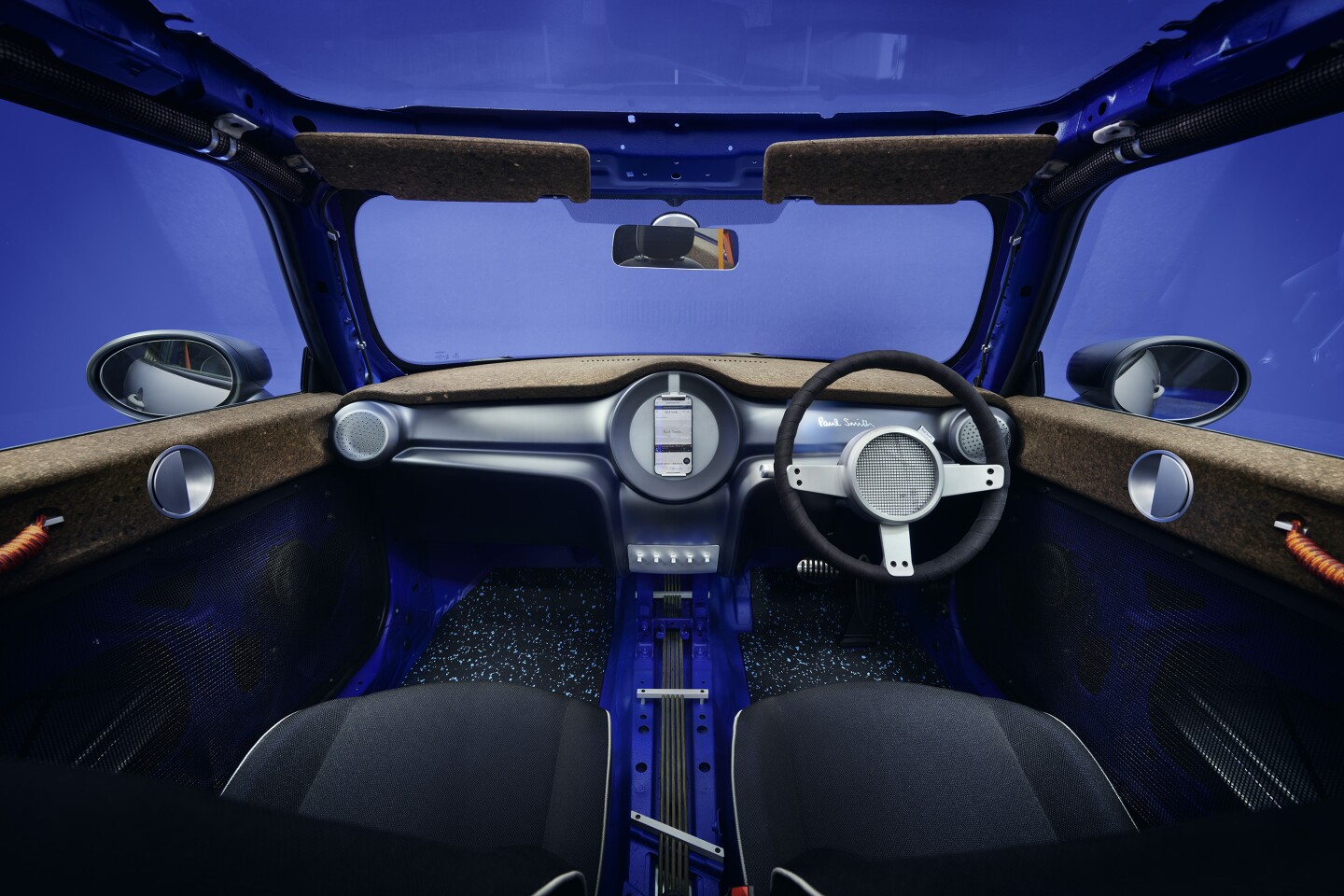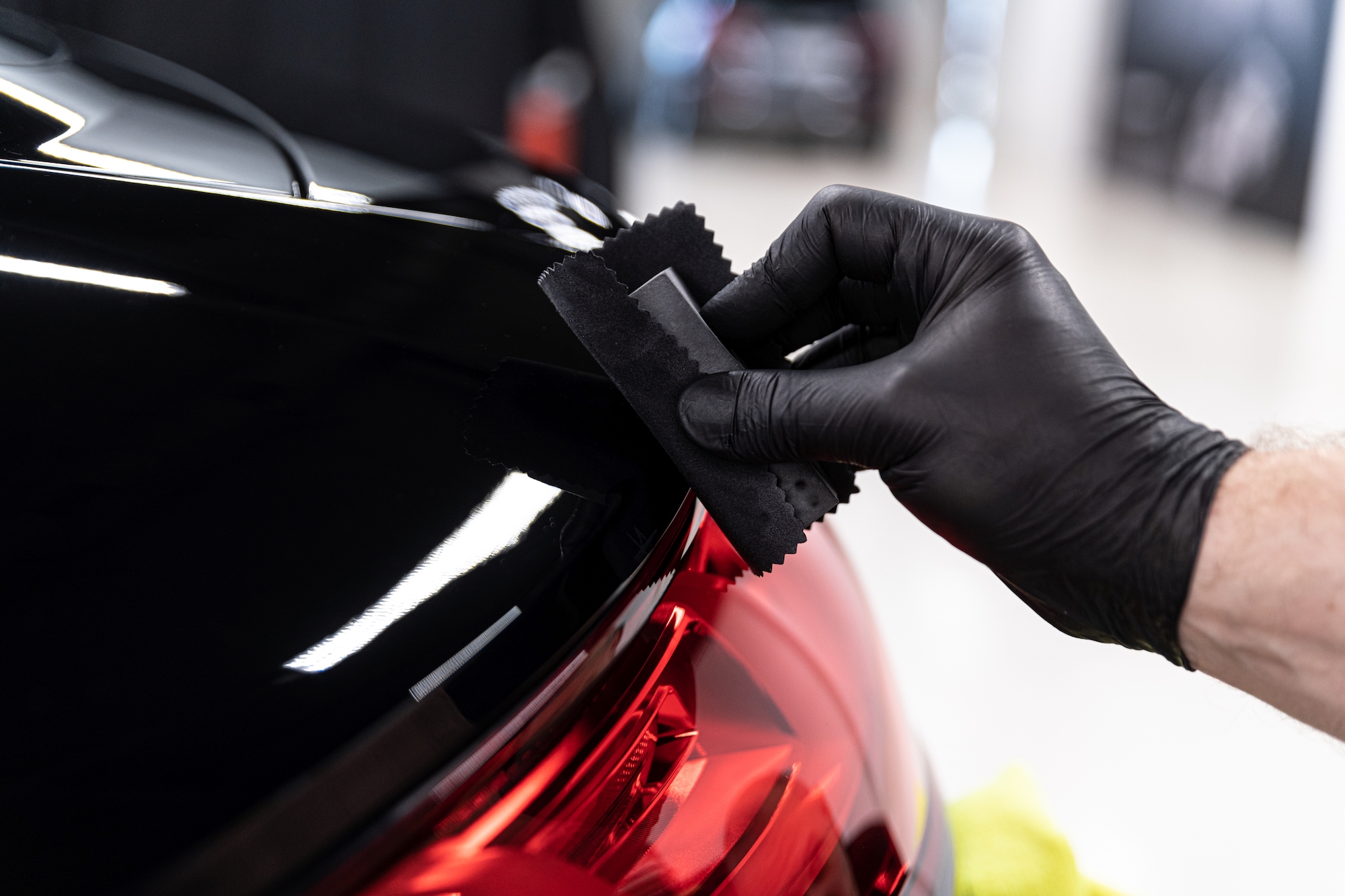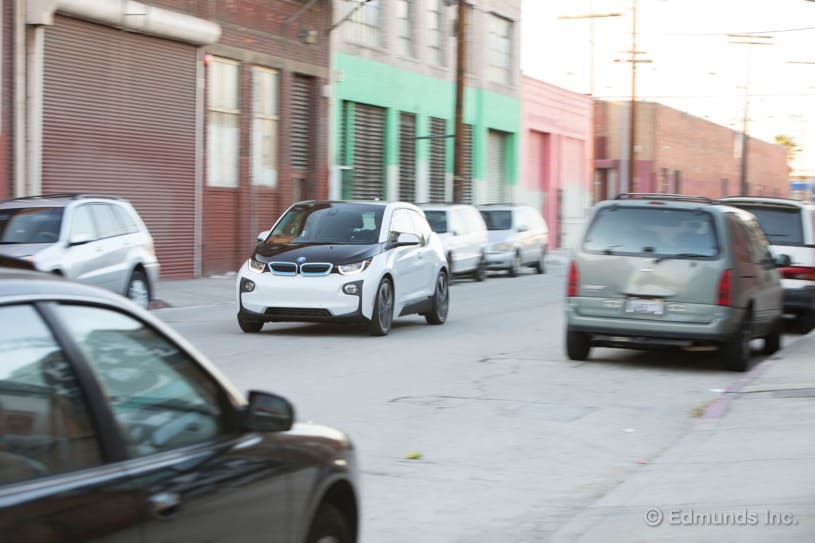Sustainably stripped Mini Cooper SE shows the beauty of restraint
One-off cars developed as collaborations between fashion designers and automakers are usually eye-roll affairs that present little beyond loud, questionable graphics, custom embroidery and maybe some big, obnoxious wheels. Which is why Mini’s new collaboration with designer Paul Smith is so refreshing. Instead of adding the usual excess to the electric Cooper SE, the parties strip it away, pulling out unnecessary materials, highlighting raw components, and using recycled and recyclable alternatives wherever possible.
Guided by the theme “simplicity, transparency, sustainability,” Mini and Smith proceeded to strip the three-door Cooper SE down to its structural essentials to create the Mini Strip.
Their work becomes clear the moment one lays eyes on the raw galvanized steel that makes up the body, with only a thin layer of transparent paint covering it to protect against corrosion. The parties even left the factory grinding marks untouched, to create an effect Smith calls “the perfect imperfection.”

Mini
That raw body is dressed with components (some 3D-printed), secured snugly with visible screws that invite onlookers to think about disassembling the vehicle at the end of its lifecycle and reusing the components and materials. The view from above shows a clear look at the undressed stamped metal through a recycled Perspex transparent roof. Recycled Perspex also finds use in the wheel covers that provide a lightweight aerodynamics boost.
Mini and Smith accelerate things inside the doors, which themselves reveal their underlying structural metal owing to lightweight mesh panels. Beams of recyclable recycled cork sit above the mesh panels, housing the milled aluminum door handles and loops of bright-orange climbing rope that serve as pulls. The seat belts match those door pulls in color.

Mini
The simplified doors set the stage for a thorough removal of interior trim and lightening of furnishings and components. Gone is any hint of the usual leather or chrome, replaced with simpler knitted seat fabric, bicycle handlebar tape on the steering wheel and recycled cork topping the dashboard. The dashboard and center console have been simplified, and Mini’s infotainment screen replaced by an empty space meant to house a smartphone, which then handles all infotainment responsibilities.
Other areas, such as the A-pillars, airbags and central tunnel and its superhighway of electrical cable, are left completely bare. Smith paints the structural elements a deep blue to accentuate the stripped-down aesthetic.

Mini
The resulting interior might push things a little too far into cold and mechanical, but the idea of stripping out some of the superfluous elements of automotive design resonates at a time when the industry is rapidly shifting toward a more environmentally friendly paradigm. Sadly, Mini doesn’t provide any information on weight savings, but hopefully the one-off will at least serve as a bullet point in a greater conversation about how vehicles can be made more sustainable (and perhaps affordable) by stripping out extraneous material and returning to basic functionality.
Source: Mini








